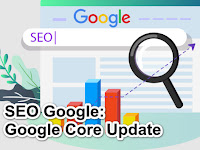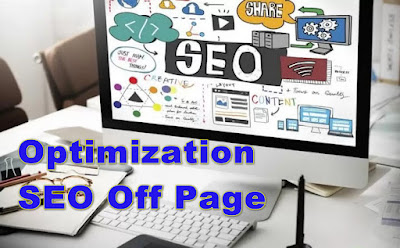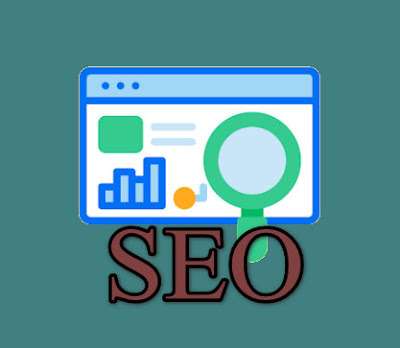SEO Google: Google Core Update 2024 - This Google update aims to improve the user experience by providing more relevant search results and preventing spam practices that produce low-quality results on search engine results pages.
You need to know, the last Google Core Update occurred in November 2023, and the last spam update was in October 2023. So, what do you need to know about this latest Google Core update? Let's explore it thoroughly together!
Why is Google Core Update Important?
First, you need to know why this Google Core Update is important. Here are some reasons.
- Improving the Quality of Search Results: Google always tries to display the most relevant and useful search results for its users. Core updates help Google understand content better and serve information that users are actually looking for. In other words, this update helps filter out low-quality content and websites that use black hat SEO practices.
- Eradicating Spam: The Google Core update also functions to fight spam websites that try to manipulate search rankings. With continuously updated algorithms, Google tries to reduce irrelevant or low-quality websites from the top results.
- Adapting to User Needs: User needs and behavior in seeking information continue to evolve. Google's Core updates help the search engine adapt to these changes. With the updated algorithm, Google can better understand what users are looking for and display results that better suit their needs.
- Maintaining Website Relevance: If your website has quality content and is continuously updated, Google Core updates can help improve your ranking in search results. However, if your website contains useless or outdated content, your ranking may suffer. With this update, website owners are encouraged to create better and more relevant content.
In essence, the Google Core Update is important to ensure users can get accurate and high-quality search results. This also encourages website owners to continuously improve the quality of their content.
SEO Google Core Update March 2024
Google Update Core has announced on its official website in March 2024 that it will change its old system with an update that is more complex than the usual core update, which involves changes to several core systems. This also marks an evolution in how we identify the benefits of content.
Google Fights Spam: Weeding Out Low-Quality Content
Google is getting serious about fighting low-quality content. The March 2024 Google Core Update includes a series of algorithm changes designed to identify and downgrade websites full of sloppy, unsubstantiated, or otherwise suspect content.
Well this is good news for anyone who has ever struggled through a sea of flimsy websites loaded with only superficial keywords and outdated information.
Think of it this way: You're looking for the best Italian restaurant in your city. Would you rather be directed to a website with in-depth user reviews, beautifully photographed dishes, and a guide on what kind of wine to pair with your pasta, or a website that simply lists the names of Italian restaurants with addresses and phone numbers?
Of course the first one! That's what Google wants too. They want to display content that is authoritative, comprehensive, and useful to users, and this Google Core Update is a big step in that direction.
The Evolution of Google Rankings: Towards a More Holistic Approach
This Google Core Update isn't just about getting rid of low-quality content. It's also about the evolution of how Google assesses and ranks websites.
While it focused solely on factors such as keywords and backlinks, Google now considers a variety of signals to determine how relevant and useful a page is to users. This can include things like the expertise of the writer, the quality of the research, the originality of the content, and even the overall user experience on the website.
In other words, Google is trying to better understand user intent and provide results that truly meet their needs. This means well-crafted, well-written, and informative content will rank better, regardless of whether it is stuffed with keywords or not.
SEO Tips for Conquering Google's March 2024 Core Update
Now that we understand what the Google March 2024 Core Update is and what Google is trying to achieve, let's move on to the most important part: how you can ensure your website stays at the top of the SERPs (Search Engine Result Pages).
Focus on High Quality Content
Google's March 2024 Core Update, dubbed the “Content Quality Update,” signals Google's continued focus on high-quality content. For website owners and SEOs, this is an opportunity to increase rankings and visibility by focusing on creating content that is informative, useful, and engaging for users.
Here are some tips for conquering this update:
1. Understand the Meaning of High Quality Content:
- Informative: Content should provide accurate, relevant, and up-to-date information that answers users' questions.
- Useful: Content should add value to users, help them solve a problem, or learn something new.
- Engaging: Content should be written in an engaging and easy-to-understand style, with appropriate use of visuals to increase engagement.
2. Conduct a Content Audit:
- Evaluate your website content based on the criteria above.
- Identify underperforming, outdated, or irrelevant content.
- Update or remove content that doesn't meet standards.
3. Create New, High-Quality Content:
- Conduct keyword research to find topics that are relevant and of interest to users.
- Create informative, useful and interesting content with a unique and personal style.
- Use high-quality visuals to increase the appeal and value of the content.
4. Optimize Content for SEO:
- Use relevant keywords naturally in the title, meta description, and body text.
- Make sure your website structure is good and easy to navigate.
- Build high-quality backlinks from other credible websites.
5. Monitor Content Performance:
- Use Google Analytics to track your content traffic and engagement.
- Perform data analysis to understand what is working and what needs improvement.
- Make regular adjustments and optimization of content based on data.
- Focus on a specific niche or topic to build expertise and credibility.
- Build relationships with influencers and experts in your niche to gain backlinks and increase visibility.
- Stay up to date with the latest developments in Google algorithms and SEO trends.
By focusing on creating high-quality content and following the tips above, your website will have a better chance of achieving higher rankings and getting more traffic from Google after the March 2024 Core Update. Remember that SEO is an ongoing process. Continue to create, innovate, and improve the quality of your content to ensure your website remains competitive and relevant in the eyes of Google and users.
Do In-depth Research
Don't just create content carelessly. Take the time to do in-depth research on the topic you are writing about. Use trusted sources, cite research and statistics, and make sure your information is accurate and up-to-date.
Pay Attention to User Experience
Google wants to ensure users have a positive experience on your website. Make sure your website is easy to navigate, loads quickly, and looks good on all devices. Use high-quality images and videos, easy-to-read text formats, and pay attention to the design and layout of your website.
Build High Quality Backlinks
Backlinks are still important in SEO, but Google is now focusing more on quality than quantity. Get backlinks from authoritative and relevant websites in your niche. Avoid fraudulent backlink schemes and focus on building natural relationships with other websites.
Monitor and Adapt
SEO is an ongoing process. It is important to monitor your website performance and adapt to Google algorithm changes. Use SEO tools to track your rankings, analyze your traffic, and identify areas for improvement. Google's March 2024 Core Update is a major change in the SEO landscape. However, this is not something to be afraid of.
By focusing on high-quality content, expertise, and user experience, you can ensure your website not only survives but thrives in this new era of SEO.

























